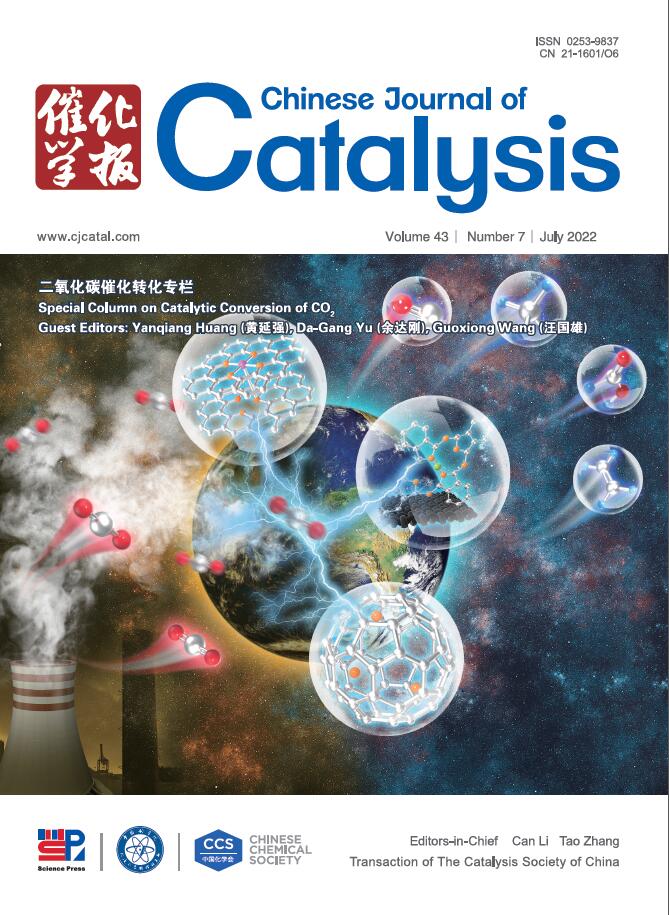s型异质结中双空位诱导极化和强化内建电场对抗生素和Cr (VI)的去除
IF 17.7
1区 化学
Q1 CHEMISTRY, APPLIED
引用次数: 0
摘要
废水中抗生素和重金属通常共存,对环境造成严重危害。本文通过静电组装方法构建了一系列具有双空位(Mo空位和光激发O空位)的VMo-BMO/Ov-BOB s型异质结。VMo-BMO/Ov-BOB-0.3体系对Cr (VI)和四环素(TC)的去除率分别为单一体系的2.47倍和1.13倍。原位EPR表明,在LED光的照射下,可以产生表面O空位。这些光激发O空位(P-Ov)使VMo-BMO/Ov-BOB复合材料在连续5个周期和放大的费米能级间隙后仍然表现出令人满意的活性。这种增强可归因于内部电场的增强和双空位诱导极化。此外,密度泛函理论计算结果表明,双空位诱导极化电场增加了偶极矩,有利于电子的快速传递。光致发光和时间分辨光致发光分析表明,s型异质结和双空位的引入促进了载流子的电荷转移,延长了载流子的寿命。对产物的降解中间体和毒性进行了评价。综上所述,提出了一种基于VMo-BMO/Ov-BOB s型异质结同时去除Cr (VI)和TC的可能机理。本文章由计算机程序翻译,如有差异,请以英文原文为准。
Double-vacancy-induced polarization and intensified built-in electric field in S-Scheme heterojunction for removal of antibiotics and Cr (VI)
Antibiotics and heavy metals usually co-exist in wastewater and pose serious environmental hazards. Herein, a series of VMo-BMO/Ov-BOB S-scheme heterojunctions with double vacancy (Mo vacancy and photoexcited O vacancy) were constructed via an electrostatic assembly method. The removal efficiency of Cr (VI) and tetracycline (TC) over VMo-BMO/Ov-BOB-0.3 was 2.47 and 1.13 times than that of a single system, respectively. In-situ EPR demonstrated that the surface O vacancies could be generated under LED light irradiation. These photoexcited O vacancies (P-Ov) enabled VMo-BMO/Ov-BOB composites still exhibit satisfactory activity after five successive cycles and an amplified Fermi level gap. The enhancement could be attributed to the enhanced internal electric field and double-vacancy-induced polarization. Additionally, the density functional theory calculation results suggested that double vacancy induced polarization electric field increases the dipole moment, which was conducive to rapid electron transport. Photoluminescence and time-resolved photoluminescence analysis demonstrated that the introduction of S-scheme heterojunction and double vacancy promoted charge transfer and prolonged the lifetime of carriers. Degradation intermediates and toxicity of products were evaluated. In conclusion, a possible mechanism based on VMo-BMO/Ov-BOB S-scheme heterojunction in the simultaneous removal of Cr (VI) and TC was proposed.
求助全文
通过发布文献求助,成功后即可免费获取论文全文。
去求助
来源期刊

Chinese Journal of Catalysis
工程技术-工程:化工
CiteScore
25.80
自引率
10.30%
发文量
235
审稿时长
1.2 months
期刊介绍:
The journal covers a broad scope, encompassing new trends in catalysis for applications in energy production, environmental protection, and the preparation of materials, petroleum chemicals, and fine chemicals. It explores the scientific foundation for preparing and activating catalysts of commercial interest, emphasizing representative models.The focus includes spectroscopic methods for structural characterization, especially in situ techniques, as well as new theoretical methods with practical impact in catalysis and catalytic reactions.The journal delves into the relationship between homogeneous and heterogeneous catalysis and includes theoretical studies on the structure and reactivity of catalysts.Additionally, contributions on photocatalysis, biocatalysis, surface science, and catalysis-related chemical kinetics are welcomed.
 求助内容:
求助内容: 应助结果提醒方式:
应助结果提醒方式:


